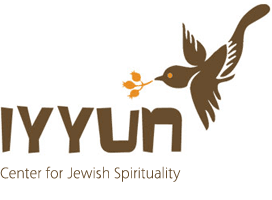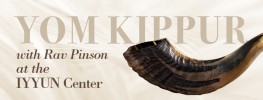Chanukah is one of the most widely known and celebrated holidays of the year. It is festive, joyous, and family-oriented. It begins on the 24th of the Hebrew month of Kislev: a significant time of year—at least in the Northern Hemisphere—when the days are the shortest, and the climate the coldest.
In the summer months, people are generally more outgoing and in brighter moods. As the sunlight begins to decrease, people tend to become more introspective. The autumnal Hebrew month of Tishrei (occurring around September and October) is saturated with holy days such as Rosh Hashanah, Yom Kippur, and the festival of Sukkos. The next month, Cheshvan, has no holidays at all, and it is typically rainy and cold. This is when people are drawn further inward, and many desire to spend time alone. Kislev continues becoming darker and colder. People tend to retreat into their warm homes, and due to a subtle hibernation instinct in humans, we may actually sleep more than usual. Kislev culminates with the Winter Solstice, the longest night of the year. The following night is therefore minutely shorter—the first glimmer of light begins to re-awaken. At this season there’s a natural desire to join with family and friends and celebrate.
Every yom tov (Jewish holy day) has a natural, seasonal explanation, as well as a historical and spiritual story that gives rise to the celebration. When the Torah speaks of Pesach (Passover), for example, it defines the celebration as a commemoration of the story of the Exodus from Egypt. However, the Torah also says Pesach is to be celebrated in “the month of Aviv” (the first month of Spring), when harvesting begins. Thus, the content of the day—the narrative— is understood within a particular context, a specific season, with all its physical and psychological qualities. Before exploring the depths of the content of Chanukah, let’s first delve more into the context, and the intricate interconnection between Chanukah and its month and season.
Re-awakening Light
When the Talmud, in Tractate Shabbos, begins to discuss Chanukah, it first mentions the story: one small jug of oil, intended to burn for one night, lasted eight nights. Then it says, “On the following year they—our sages—established these days as holy days for singing praise and offering thanks.” In other words, the sages didn’t celebrate the miracles of Chanukah right away. Only when the season came around again, did they perceive the nature of the previous year’s events. They sensed that the energies of these miracles were ‘established’—the miracles re-manifested, in a spiritual way, on the same dates of a following year. By confirming the fact of this reappearance, our sages empowered us also to tap into the miraculous energy of Chanukah that appears each year.
Why do we celebrate the miracles of Chanukah and not other miracles? Why is there no holiday commemorating the manna or the miraculous well of Miriam? The answer is, we only celebrate past events when they can be re-experienced in the present.
It would seem that the annual re-appearance of the miraculous energy of Chanukah is due simply to the cyclical patterns of time—there are certain patterns that rotate and return each year at the same time. However, in Jewish spirituality, we sense a linear movement of time as well. Time is always progressing forward towards a spiritual culmination. Therefore, unlike the natural patterns of the year, the energies of Chanukah progress toward a culmination, revealing something completely new each year. This linear movement joins the cyclical movement of nature to form an upward-spiraling, reawakening, ever-new light of Chanukah.
The Name of the Month – Trust and Hope
Kislev is the ninth month of the year, counting from Nissan. In the Torah we find that the root of the word Kislev means ‘trust’ and ‘hope’: “Did I place my kili (my hope) in gold…?” (Job, 31:24) “…And they placed in Hashem their kislam (their trust).” (Psalms, 78:7)
Kislev therefore illustrates the issue of trust. When you make an appointment to meet someone, and they haven’t yet arrived, you can’t see them or know for certain that they’ll arrive on time. You can only see or envision their arrival by means of trust. When our days are dark and cold, we may not see the light and warmth of life clearly. Many people struggle with “seasonal affective disorder”, a form of depression attributed to the diminished sunlight of Winter. After the Winter Solstice, the glimmer of light that arrives really does spark in us a trust in a brighter future.
In terms of the historical narrative of Chanukah, the Hasmonians had tremendous bitachon to stand up to their Roman oppressors. Despite the darkness of their time, they trusted in the miraculous. This inspired them to look at a defiled Temple and envision its re-purification. Because of this trust, their eyes were open enough to find a small measure of oil with which to kindle the Menorah.
Writing some two hundred years after the re-dedication of the Temple, Josephus calls Chanukah “the Festival of Lights”. Although his historical accuracy is debatable, and he doesn’t even mention the miraculous oil, we can learn about Chanukah’s theme of trust and hope from his account: “Perhaps the reason (for the name “Festival of Lights”) is that a freedom beyond our hopes appeared to us, and so this was the name given to the festival.” (Antiquities VII:7)
The Letter of the Month
Every point in the calendar has a unique energy, symbology, and opportunity for growth. The ancient text, Sefer Yetzirah, teaches that the month of Kislev corresponds to the letter Samech, the astrological sign of Keshes or Sagittarius, and the rectification of “sleep”. What can we learn from these correspondences?
The letter Samech literally means ‘to support or uphold’. When people have a deep trust that they are supported, even if they fall into darkness, they are able to bounce back.
The Sign of the Month
Sagittarius is a centaur with a drawn bow. A drawn bow is similar to the above image of ‘bouncing back’. The arrow is drawn backwards, and great tension is created. The bowsman trusts, however, that the deeper the arrow regresses, the further it will fly when released.
The Sense of the Month
Sleep, also, involves ‘descending’ into unconsciousness and vulnerability. An environment that is not trustworthy may keep a person from falling asleep. We tend to sleep only when we can trust that we will awaken.
When Sefer Yetzirah mentions “sleep”, it categorizes it as one of several chushim, ‘senses’–as in the senses of smell and sight. What does this mean? Some people have a chush—a refined ‘sense’ or taste for the art of sleeping. In contrast, others have a utilitarian relationship with sleep; they sleep because they’re tired or they seek an escape from the waking state. A ‘gourmet’ sleeper has deeper trust in Divine support, as the Book of Mishlei says, “If you rest, you will not worry; you will lie down and your sleep will be pleasant…, for you will trust Hashem.” (Mishlei 2)
When we lack trust, our minds are filled with self-centered worries, doubts, and the unfinished business of the day. This prevents deep, pleasant rest, and we may not ‘bounce back’ or awaken with energy for the next day. Therefore, to rectify the ‘sense’ of sleep, to make our sleep more G-d-centered and “pleasant”, we must refine our faculty of trust.
Prophetic Visions of Chanukah
A few hundred years before the Chanukah story, the First Temple fell and Jewish sovereignty was stripped from the Land of Israel. One 24th of Kislev during this dark time, the prophet Chagai spoke to his broken People. His words inspired them to expect and envision the magnificent rebuilding of the Temple. Chagai spoke to the priests of the laws of purity–a prophetic hint, perhaps, to the pure jug of oil that would be found in the future, on the same date. Despite the bleakness of Winter, and the trauma and opposition they had survived, the People were filled with so much Divine trust, that they immediately began to rebuild the Temple.
Another prophet of those difficult times, Zechariah, transmitted to the People an image of purity and grandeur: he prophesied about a menorah of pure gold, flowing continuously with holy oil. Thus, long before the Chanukah story, the menorah became a symbol of hope and light. Many centuries later too, the menorah became the symbol of the Jewish People, and a major theme in synagogue art and architecture.
A Primordial Chanukah
The Talmud (Avodah Zarah, 8a) tells of a celebration of light during the time of year that would later become Chanukah.
“When Adam—who was created in the beginning of the year, on the first day of Tishrei—noticed that during the first three months of his life, the days were getting gradually shorter, he said, ‘Woe is to me! Because I’ve sinned, the world around me is being darkened and is returning to its state of chaos and confusion; this must be the kind of death which has been sentenced to me from Heaven!’ He took upon himself to pray, fast, and look within. After eight days, he noticed the Winter Equinox (the Tekufas Teves, the season of the month of Teves), and saw that indeed the days were beginning to lengthen again. “So this is the way of the world!” he exclaimed, and he celebrated for eight days.”
The Darkest Night
The Winter Solstice generally occurs during the last week of Kislev. Therefore, not only does the week of Chanukah contain the longest night of the year, but at the end of a lunar month the nights have virtually no moonlight.
A student of the Baal Shem Tov named Rabbi Yakov Yosef determined, through complex calculations, that the night of the Chanukah victory and the re-lighting of the Menorah was precisely the longest night of the year. This deepest darkness sets the stage for the greatest possible revelation of light.
Divine Light
The light that comes from fire is dependent on the burning and destroying of something else. Divine light, however is self-derived. At the Burning Bush, Moshe encounters Divine light. It shines like a fire, and yet the bush is not consumed. This light doesn’t necessarily take away the darkness–it somehow shines within the darkness. This is the “Ohr HaGanuz”, the ‘Hidden Light’, the Divine light that burns within the darkness of Creation, yet doesn’t consume Creation. It is the light of Chanukah revealed in the darkest nights of the year and the darkest times of exile. Thus, the small jug of oil lit by the kohanim didn’t consume any oil.
When people are inspired they can rise to meet great challenges. These are times when the pure “oil” of a person’s soul shines brightly. Sadly, however, such peak experiences of inspiration wane, and most people return to the comfort of darkness.
The “miracle” of Chanukah was that the Jews were able to shine brightly for eight nights, extending beyond the natural cycle of a week. If Chanukah began on a Sunday, the last night was also Sunday again, and yet they were illumined as if it were the first night. The brilliance actually filled them throughout the whole year, and therefore they established that the inspiration and illumination of Chanukah would continue to manifest every year, for all generations. Every Chanukah is a special time for revealing the Hidden Light. Unlike all the Torah-based holidays, however, at the end of the Rabbinic holiday of Chanukah there is no havdalah, or ritual of separation. May we never separate from the timeless light of Chanukah. May it permeate every moment of our lives.
The Sefer Yetzirah, among other texts, reveals a constellation of unique energies, themes and spiritual practices for each month of the year. We will build on these teachings in order to discover some of the deeper meanings of the month of Shevat, and its special day, Tu b'Shevat.
Read more...| As the night of Rosh Hashanah—the cosmic story of creation—is unfolding, lets begin our own journey with a story.
The Rebbe of Lelov awoke with the dawn, washed, and rushed to the synagogue for his morning meditations and prayers. While hurrying along the path, the Rebbe chanced upon a student. Surprised to see another awake at this hour, the Rebbe inquired as to his intentions. The student duly reported that he was on his way to the village bakery, where he was employed. He bowed his head in shame. “Master, it is shameful, you arise with the dawn for such noble a purpose, and I awake merely to bake bread.” The Rebbe gently corrected the young man. “In each of us lies the innate desire and power to create. This manifests itself as a yearning to create and share our creations with others. In each of us this manifestation is unique. My contribution is that of teaching and inspiring, and you, you give the village the gift of bread…” We all strive to be creative and creators. Sefer Yetzira-the book of formation is perhaps one of the oldest Kabbalistic texts around. It speaks of the mysteries and deepest secrets of creation, and it speaks of the Creator as the scribe and creation as the story. Philosophers and mystics have attempted to decode its secrets for centuries. Traditionally, this sacred text had been read as a narrative describing the Creator’s process of creating; yet others have opted to view the text as a manual for our own role in creating our reality. The process of creation is continuous, both on a cosmic and personal level. Largely, we observe on the outside what exists on the inside. What we see in the universe is a projection of internal universe, and this interpretation and reinterpretation is constant. Otherwise, how can we be responsible? How can we accept responsibility if we don’t acknowledge creatorship? Internally speaking, a creator is one who masters life and not the converse. A creator’s emotions and character are based not on coincidental circumstances that occurred to him, causing him to be a certain way; rather, those emotions come from deep within him (or her). The creator is the architect of his/her own existential reality, and not at the mercy of “surroundings.” There are those who must endure tragedy to gain empathy and those who must be surrounded by kindness in order to be open, loving and giving. The creator, however, does not allow himself to become what his external surroundings and experiences dictate; rather, he searches deep within his own mind and heart and develops empathy and kindness and all other emotions through true introspection and inner searching. He creates his own life experiences. This is on a personal level, building one’s character from within, rather than based on one’s surroundings. The Founder of Chassidic philosophy, the Baal Shem Tov, explained the words of the Torah in Genesis, “Let us create man” to mean, I’m giving you, the Creator says, your potential, now you create yourself together with me, develop yourself using your inner strength and abilities. There is the outer and inner world—one is the realm of the effect while the other is the cause. The internal inner world is the essential and the cause of the outer. When we surrender to the outer, then life is merely the effect. We will then continually find ourselves in situations and predicaments where we feel we have no choice whether to be there or not. However, if we live from the inside out, we then become and live as masters. And so, a beneficial practice would be to set the tone of the day during the first waking moments. The first thoughts, and especially the first words uttered, are very important in how the day will move along. If in the morning the first thing we do is become inner directed, that is we pray, reflect, become introspective, then the rest of the day will follow that course, and we will be the masters and creator of the day. We will be the cause of life and not the effect. However, if we choose to fill our mind in the waking hours with ideas that exist in the realm of the effect, then the day will follow that course, and we will find ourselves in the receiving end of life, finding ourselves in the effect, in circumstances and situations that seem beyond our control. |








